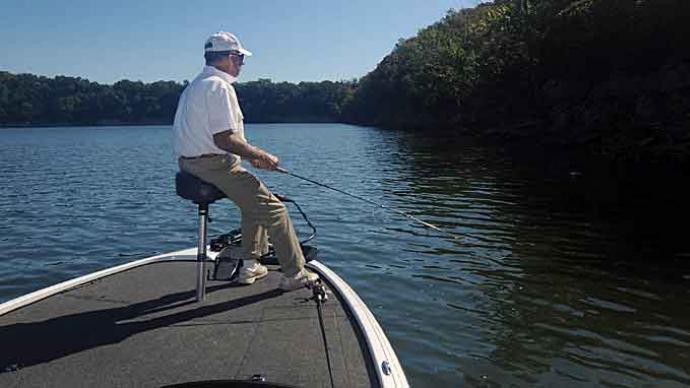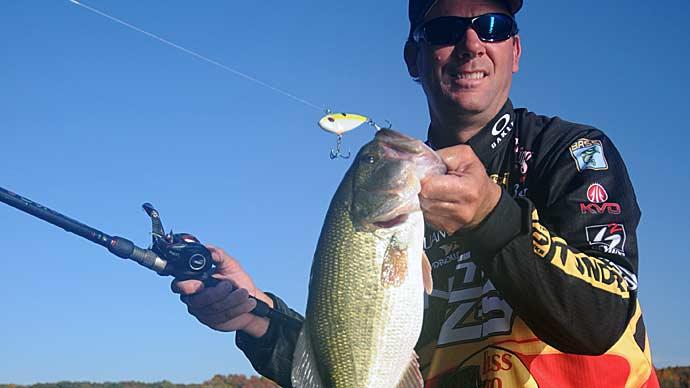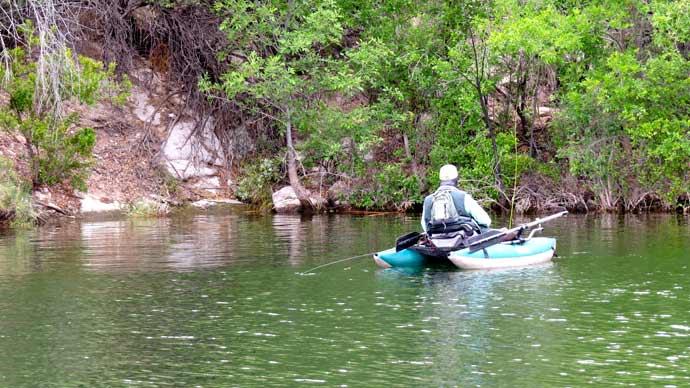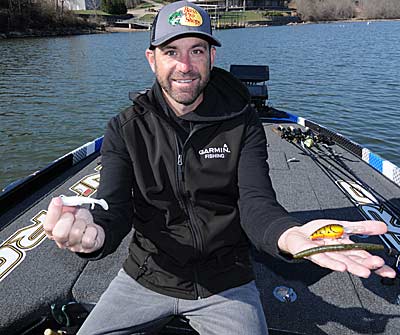
When Casey Scanlon prepares for a guide trip, he makes sure the lures he selects match the skill levels of his clients.
The Missouri guide estimates that 50 percent of his clients are novices. "A lot of them are fishing for the first time or have minimal experience, so I am often teaching them how to use spinning tackle,” Scanlon says. In addition, he takes out some experienced anglers who know how to use baitcast tackle and tries to teach some novices how to use baitcast gear.
Scanlon bases his lure selection for beginners on the following criteria: seasonal patterns, versatility, simplicity, and sensitivity. "Usually, you want to use something that the lure has quite a bit of action in itself, something that is easy to work and something that they can feel the bite on,” Scanlon says. "Many times, some baits like a jig get a lot of bites, but it is tough to detect those bottom bites a lot of times, so you want a bait that is easy to hook the fish and get it in the boat and something they don’t have to impart a ton of action into it.”
Scanlon recommends three lures for beginners to catch bass based on his guide trips.
Stickworm
A stickworm is an effective lure for novices because it produces nearly year-round and is easy for bass to trap. "It is something that you can throw most of the year and catch bass on any body of water, whether it is Lake of the Ozarks, a small pond, or in Florida," Scanlon says.
The stickworm is also versatile and virtually snag-free. “You can rig it various ways,” Scanlon says. “We do a lot of Texas rigs, Ned rigs, wacky rigs, and drop shots with some kind of a small worm bass that can hang onto a long time.”
The Lake of the Ozarks guide recommends that beginners opt for a 5- or 6-inch stickworm. “That seems to be a good general size for bass of all sizes, anything from a 10-pounder to a 12-ouncer,” Scanlon says.
The tournament pro claims the lure produces both numbers of bass and trophy bass. “I have caught 10-pounders in Florida. The biggest bass (13 pounds) I have ever caught has been on a stickworm in Florida,” Scanlon says.
Although the lure mimics a variety of bass forage ranging from dying shad to bluegill, Scanlon picks basic stickworm colors for his clients. He stresses to beginners to "not get psyched out about all the available colors." Scanlon recommends that novices choose stickworm colors in green pumpkin, black/blue, and watermelon most of the time and some purple shades in the summer.
Scanlon advises beginners to use a basic retrieve of “the slower, the better” when presenting a stickworm to bass. “Throw it out there and don't impart much action to it,” he says. “Most of the time, drag it slow if you are fishing it on the bottom. If you are fishing it weightless, let it sink to the bottom, move it slightly, and make another cast. It is a bait you don’t have to do a ton with and can catch fish from zero to 20 feet.”
The Bassmaster Opens competitor recommends beginners choose a 6-foot, 6-inch, or 7-foot medium action spinning rod and 2000 or 3000 spinning reel spooled with a main line of 10- to 15-pound Bass Pro Shops braided line and a 15-foot leader of 10-pound Bass Pros Shops fluorocarbon for stickworm fishing. Novice anglers proficient with baitcast tackle can use a 7-foot medium-heavy casting rod and 7.1:1 gear ratio reel filled with 12- to 20-pound fluorocarbon.
Crankbait
Image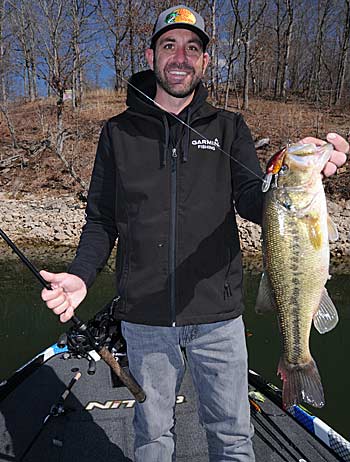
A medium-diving crankbait is an ideal choice for beginners to catch bass throughout the year. Crankbaits trigger strikes from bass throughout the year. "It is a bait that is easy to hook bass on if you use the right combination of rod, reel, and line (7-foot medium to medium-heavy action spinning or casting rod, low gear ratio reel, and 12- to 15-pound monofilament or fluorocarbon line)," Scanlon says. “You can get crankbaits in various sizes and running depths, which are relatively easy to fish.”
Scanlon notes crankbaits with 6 to 8 feet diving depths are ideal for beginners. He also suggests beginners try squarebill crankbaits, which are ideal for running shallow when fishing ponds or fishing from the bank.
Crankbaits imitate anything that swims, so Scanlon bases his color choices on what bass are foraging on during each season. He selects shad pattern crankbaits during the warmer months and favors crawfish patterns in the spring. His choice for cranking in dirty water is a crankbait tinted with some chartreuse.
A steady retrieve at a medium pace is the standard presentation for crankbaits. "Throw it out there, reel it in, try to feel what your bait is doing, and try to make contact with objects in the water,” Scanlon says.
The crankbait triggers reaction strikes from big bass and can also produce numbers of bass because it can cover a lot of water, which puts it in front of more fish throughout the day.
Swimbait
“A swimbait replicates whatever bass are eating, and you can throw it in various sizes," Scanlon says. “It is easy to fish. In most cases, you can throw a swimbait out and reel it back to the boat, and the fish will almost hook themselves on it."
Scanlon claims a swimbait is fairly snag-resistant because you can fish it high in the water column in either open water or over the top of the cover. The lure is productive in all seasons and at various depth ranges. Scanlon suggests a swimbait mimics a shad, blueback herring, shiner, or other baitfish swimming in your home waters.
The guide usually sets up his clients with a Tackle HD 3.5-inch Swimmer swimbait rigged on a 1/4-ounce jighead. A swimbait can also be impaled on an Alabama rig or belly-weighted hook, or you can buy a pre-rigged one.
Scanlon picks natural colors for his clients’ swimbaits. He opts for white hues on cloud days or fishing in dirty water and picks translucent natural shades such as iridescent blue for clear water and calm conditions.
The swimbait retrieve depends on the depth he wants his clients to fish. If they are throwing to the bank, Scanlon advises them to start retrieving instantly after the lure hits the water. On the other hand, if fishing 20 feet deep on a point, Scanlon has his clients count the lure down so it sinks 2 to 3 feet and then retrieve it at a steady pace.
Beginners should throw the swimbait on a 7-foot medium or medium-heavy action spinning rod and 2000 or 3000 spinning reel filled with a main line of 10-pound braid and a 15-foot leader of 10-pound fluorocarbon.
Swimbaits are big bass lures when attached to an Alabama rig and produce good numbers when hooked on a jighead.


